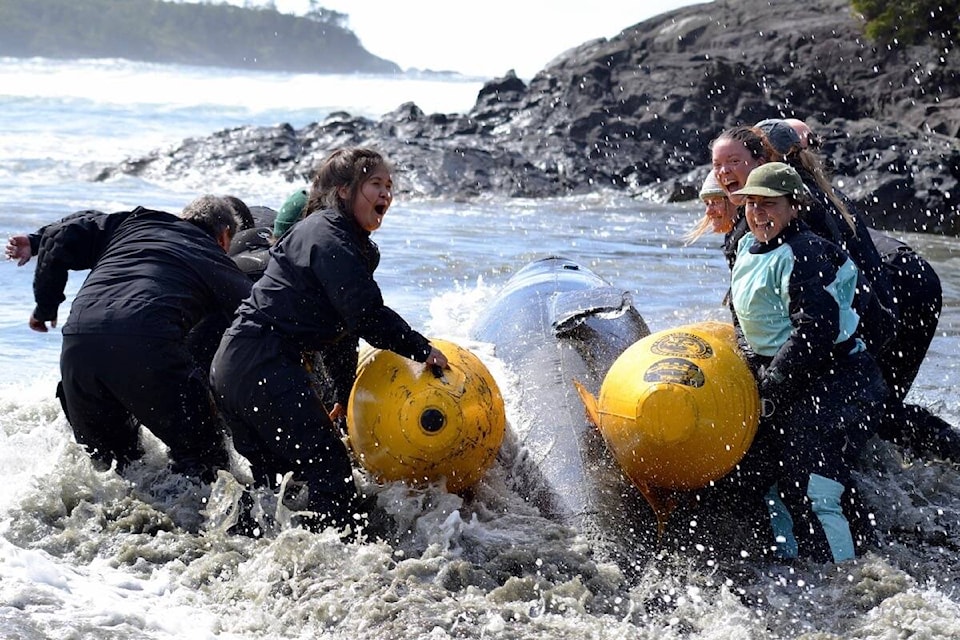Coastal First Nations teamed up with marine mammal experts to return a fake-beached whale during a marine mammal rescue training exercise last week near Tofino.
A surging high tide coupled with the weight of a life-sized juvenile killer whale made for challenging yet realistic conditions on March 30 at Cox Bay, but the group of 14 was able to save the rubber whale in record time.
“It’s about getting used to the equipment, understanding the equipment and then being able to respond to a real event, which hopefully we never have, but we know Tofino is susceptible to stranded cetaceans,” said Paul Cottrell, marine mammal response co-ordinator for Fisheries and Oceans Canada (DFO).
He said the team, which included members of Nuchatlaht First Nation, Mowachaht/Muchalaht First Nation, Ahousaht First Nation, Parks Canada, and Strawberry Isle Marine Research Society (SIMRS), did a fantastic job getting the whale into the water.
“It’s not an easy thing to do. You guys listened. You guys nailed it,” said Cottrell.
SIMRS executive director Karyssa Arnett led the team during the marine mammal refloatation exercise. The drill took about one hour, and involved setting up a parameter, rolling a sling under the mammal, securing the sling and then lifting the whale roughly 15-metres to reach the surf.
“It was awesome to be able to work with the two different Nuu-chah-nulth Nations and the other folks cross-island. Building that network is what it’s all about,” said Arnett, noting that while she has never personally dealt with a stranded whale, SIMRS has helped with marine mammal rescue missions for past 30 years. Two years ago when a deceased Risso’s dolphin washed up on Chesterman Beach, SIMRS was on site to assist with moving the animal.
“When this incident eventually does happen, we’re prepared. We have the equipment, we have the personnel, and we know the processes in which to do that,” she said.
The West Coast currently has two refloatation kits purchased under Canada’s Ocean Protection Plan: one is at the DFO office in Tofino and the other is at Parks Canada office at Long Beach.
After the exercise, Nuchaltlaht First Nation Judae Smith said she felt relieved and proud that they were able to work as a team to get the fake whale back to the ocean.
“It was a bit of a challenged, but I think I could do it again. Everything is all done by hand. There were no cranes or anything involved. I think if we have an opportunity to get the community involved so they know more about that would be great,” she said.
RELATED: Washed up Risso’s dolphin offers glimpse into “whole other world” near Tofino
nora.omalley@westerlynews.ca
Like us on Facebook and follow us on Twitter.
VIDEO: Vancouver Island expert says 72 whales spotted the most in one day
READ MORE: B.C. First Nation’s land rights claim is about reconciliation, lawyer tells court
